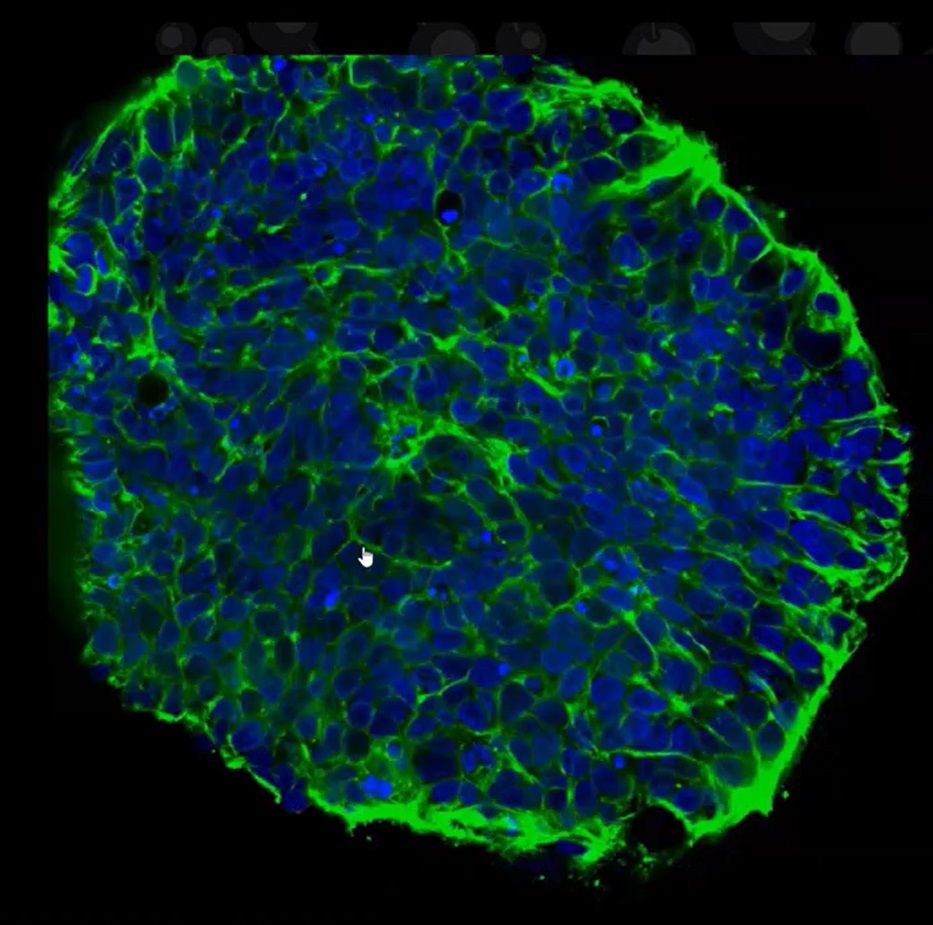Formnext 2024 is known as the world’s leading trade fair for industrial 3D printing, with towering machines and manufacturing giants filling its halls. Amid this industrial frenzy, Axolotl Biosciences, a life sciences company focusing on bioinks for tissue engineering, has carved out a unique space, showcasing its work and proving that biotechnology can thrive on a stage typically dominated by hardware-heavy players.
Axolotl Co-founder and CEO Stephanie Willerth attended Formnext for the first time, where she spoke with 3DPrint.com about the company and its upcoming initiatives.
At this year’s Formnext, Willerth had pitching sessions, live demonstrations, and networking opportunities, including a livestream with YouTube influencer 3D Printing Nerd. This spotlight highlighted Axolotl’s work and showed the growing interest in bioprinting outside the scientific community. The company also won Formnext’s Startup Award, which is supported by AM Ventures, which comes with a €5,000 prize.
In a Sea of Printers
While Formnext primarily highlights industrial applications, Axolotl Biosciences is one of only a handful of life sciences companies at the event. This distinction positions Axolotl as a pioneer bridging biotechnology and additive manufacturing. “There’s a lot of curiosity,” Willerth said. “People come up to me and say, ‘Wait, you can print tissues?’ And I tell them, ‘Yes, that’s exactly what we do.’”
Axolotl’s booth may not feature large printers or massive installations, but this is typical for life sciences, where precision matters more than scale. Instead, it’s filled with impactful tools and products. Among them are syringes of bioinks like TissuePrint, their flagship product, which supports diverse cell lines and enables the creation of neural and other human tissue models. These bioinks are not just scientifically advanced—they’re accessible. Priced at approximately $100 per milliliter, they balance affordability and high performance despite rising supply chain costs.
At Formnext, Axolotl showcased its TissuePrint bioink while providing updates on two highly anticipated products in its pipeline. The first, BrainPrint Bioink, is specifically designed for printing brain tissue models and incorporates Axolotl’s patented drug-releasing particle technology. This product is currently awaiting funding approval through a Canadian government procurement process, which would make the government its first customer.
Depending on the outcome, BrainPrint is expected to launch in late 2024 or early 2025. The second product, a Cardiac Tissue Bioink, is tailored for 3D printing heart tissue and represents the company’s focus on developing organ-specific bioinks. While still in development, it marks another step forward in Axolotl’s contributions to advanced tissue engineering.

A confocal image of one of Axolotl’s bioprinted brains using its bioink. Image courtesy of Axolotl Biosciences via Twitter.
Willerth also revealed that Axolotl has been conducting beta tests with potential customers and collaborating on advanced 3D printed tissue models to mimic human diseases. Notably, Axolotl recently published a 3D printed Alzheimer’s tissue model, with a Parkinson’s model in development. These tissue models are key for drug screening and disease research, providing pharmaceutical companies with reliable, human-relevant tools to test new therapies without relying on animal testing.
Scaling Up
Collaboration is a cornerstone of Axolotl’s strategy. One of its most important partnerships has been with StarFish Medical, supported by Next Generation Manufacturing Canada (NGen) funding. Together, they scaled up the production of Axolotl’s drug-releasing particles, a critical component of the company’s BrainPrint bioink. This project, completed in 2023, focused on implementing commercial-scale microfluidic processes for fabricating drug-releasing microspheres, enhancing the bioink’s application for generating human brain tissue models.
Axolotl has also collaborated with Aspect Biosystems, a Vancouver-based bioprinting company, to develop functional neural tissue models from human stem cells. This partnership earned recognition through the University of Victoria‘s REACH Award for Excellence in Research Partnerships in 2020.
The company itself is a spin-off from Willerth’s research group at the University of Victoria, where she continues to serve as a professor of mechanical engineering. Willerth’s academic expertise in tissue engineering and regenerative medicine provides the scientific foundation for Axolotl’s innovative work. Her research focuses on developing bioactive scaffolds for directing stem cell differentiation, combining physical and chemical cues to achieve precise results.
One of her key contributions has been the creation of scaffolds for controlled drug release, enabling the long-term delivery of chemical signals to guide the differentiation of stem cells into neural tissues. These breakthroughs can potentially address significant biological challenges, such as creating engineered tissues for treating diseases like Parkinson’s or repairing spinal cord injuries to restore lost function.
At the Willerth Lab, her team uses next-generation sequencing to analyze transcription patterns in differentiating stem cells, uncovering the mechanisms that drive these transformations. This meticulous approach allows them to engineer neural tissue from pluripotent stem cell lines under tightly regulated conditions, aiming to produce tissues suitable for transplantation. These same principles form the backbone of Axolotl’s work, bridging academic research with commercial applications to create products that meet the needs of researchers and clinicians alike.
From Lab to Booth
Looking ahead, Willerth envisions bioprinting becoming more integral to disease modeling and pharmaceutical development. “We’re seeing a shift,” she explained. “Companies like Aspect Biosystems are conducting long-term preclinical studies, and we aim to expand our drug screening tools with Alzheimer’s and Parkinson’s models.”
Axolotl’s technology also serves the stem cell community, providing ready-to-use bioinks for researchers who may not have material science expertise. “Our goal is to make it easy for scientists,” Willerth said.
With only a small team and a single product currently on the market, Axolotl is scaling quickly. The company is actively fundraising, preparing for its first venture capital investment to transition operations off-campus, hire senior executives, and enable co-founder Laila Abelseth to join full-time. This funding will also support bringing their second and third products to market. Willerth noted, “We’re also planning to start selling in the U.S. soon, which is a big step for us after focusing on Canada.”
With ongoing work in neural, cardiac, and brain tissue, Axolotl demonstrates the vast potential of bioprinting to revolutionize healthcare. With an ambitious roadmap and a focus on solving real-world problems, Axolotl is a key addition to Formnext.










Leave a Comment